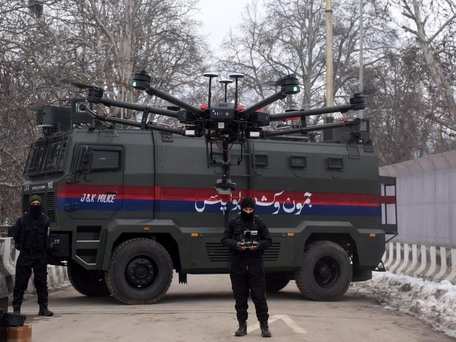Initial investigations into the attack at the Jammu airbase suggest that an improvised low-cost rotary wing drone was used to drop explosive charges at the technical area. It was not a high tech ‘suicide drone’, which could have caused massive damage. No debris of the UAV that carried out the strike was found at the location and the explosive debris collected from the spot is being analysed.
Intelligence reports had last year warned that commercially available Chinese drones could be used by terror groups and terror cadres were being trained to operate them in Pakistan-occupied Kashmir by the Lashkar-e-Taiba.
While all Indian airbases and vital military installations have air defence cover against conventional missiles and large military drones, identifying and tracking improvised rotary wing unmanned aircraft will be a major headache, given proliferation by Chinese manufactures across the world.
Specific intelligence shared with security forces in April 2020 had warned that the LeT had procured an unidentified number of rotary wing drones from Chinese manufacturers and were rigging them with explosives and grenades for targeted attacks. The intelligence report had also said LeT would hand over some drones to Hizbul Mujahideen terrorists operating in J&K to target sensitive locations.
Intelligence inputs had mentioned in particular 5-6 kg explosives could be carried by the drones that typically have a range of 4-5 km. Insiders in the security establishment said that it seemed like 5-6 kg explosive charge was used in the Jammu attack and the drone may have been controlled from near the airbase, on Indian territory. The Pakistan border is 15 km away from the airbase.
While forces have been investing in counter drone technology, combating such low-cost threats could be complicated. One technology uses signal jammers to disorient the drones away from target areas. However, they are ineffective against programmed drones that don’t use radio signals as they need to communicate with the operator.
The technology to detect such drones crossing the border does exist and can be put in place but combating such low-cost devices operated by terrorists in the hinterland would be a larger challenge.






